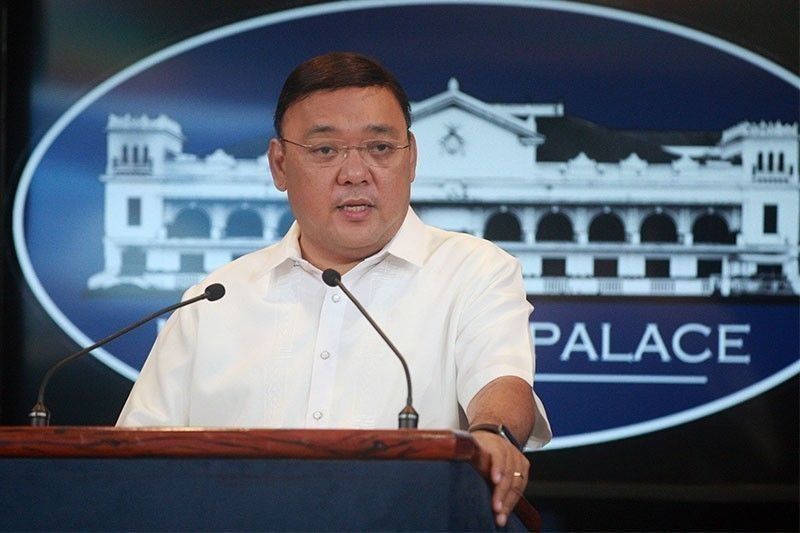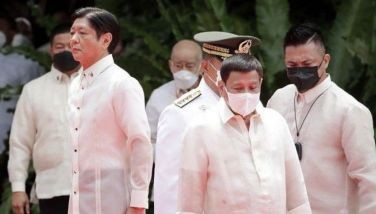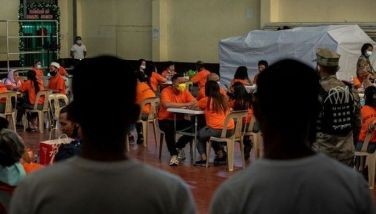Roque: We could've 'done better' by expanding COVID-19 testing capacity in January

MANILA, Philippines — Malacañang on Thursday admitted that it could have increased the country's capability to test for the novel coronavirus disease months sooner.
"If I were to look back, what we could have done better, maybe, is when we had our first imported case of COVID-19, we broadened our testing capacity right away," Presidential spokesperson Harry Roque said in a mix of English and Filipino.
Roque further acknowledged that it took the government some time to increase the number of laboratories capable of testing for the disease but said that it has since bumped up the number of labs to over 70. Latest data from the health department shows 78 accredited COVID-19 laboratories.
The Department of Health confirmed the first case of the deadly disease as early as January 30 —a female tourist from Wuhan City, China where the virus first broke out in 2019.
On January 29, the department announced that it was capable of testing for the disease, with Health Secretary Francisco Duque III saying "for the first round of testing, we are adequately supplied."
Since then, the government has repeatedly failed to meet its testing goals and has been unclear on whether their goals refer to testing capacity or the actual number of tests being conducted per day.
'Expanded targeted testing' timeline
In April, the government set a goal of 8,000 tests per day by the end of month but subsequently missed the deadline. It reached a testing capacity of over 8,000 on May 10.
Roque in May claimed that 32,100 tests were being administered per day — exceeding the then capacity goal of 30,000 — but later walked back the comment saying that he was referring to testing capacity and not actual tests performed.
Data from the health department showed that the government was conducting less than 10,000 tests per day at the time.
By June, Metro Manila was put under general community quarantine (GCQ) against the recommendations of UP researchers, who said more testing needed to be done before restrictions were loosened.
On June 25, an official of the National Task Force against COVID-19 said that the Philippines had met its daily testing capacity goal of 50,000.
"Our goal of 50,000 testing capacity, our ability to test as of June 30, was exceeded on June 19," NTF Deputy Chief Implementer Vince Dizon said during a Palace briefing.
However, he clarified that the actual number of tests being conducted per day was at 16,000 — less than a third of the projected capacity.
When the government announced the 50,000 daily testing capacity goal, it had yet to actually demonstrate its previous capacity goal of 30,000 tests per day.
Despite the COVID-19 task force's recent approval of a plan to boost testing in the country in the coming months, the health department is racing against the clock just to achieve its more modest testing goals for the month.
Health Undersecretary Maria Rosario Vergeire in June said her department aims to test around 1.63 million Filipinos—about 1.5% of the population—by the end of July.
To achieve this goal, the government would have to double the number of tests it has conducted so far in less than a month.
Data from the health department shows that only 823,372 Filipinos — about 0.75% of the population — have been tested as of July 7.
This is in stark contrast to the government's plan to test 10 million Filipinos — about 9% of the population — in the coming months.
The department on Thursday logged a total of 51,359 novel coronavirus cases and a record-high of 2,539 new infections on Wednesday.
This, only days after the previous record-breaking high of 2,434 on Sunday, and another 2,099 infectecions on Monday.
More testing, isolation needed
Roque last week celebrated "beating" a forecast made by researchers from the University of the Philippines which estimated a total of 40,000 cases in the country by the end of June.
On June 30, the official health department tally stood at around 38,000, with Roque claiming that only about 1,000 backlogged cases remained.
Sunday's tally alone saw 1,287 cases coming from the national backlog.
The health department on Monday clarified that it still has backlogs of around 8,000 cases.
A researcher from the University of the Philippines on Tuesday warned that COVID-19 cases could breach 100,000 in the country by the end of August.
"Based on what I saw, the trend will increase even more, over 100,000 if we don't change our system and the way we handle the pandemic," mathematics professor Dr. Guido David, a member of the UP OCTA Research group told ABS-CBN in Filipino.
Guido added that his group's working model now predicts at least 65,000 infections in the country by the end of July.
This new figure forecasts at least 5,000 more cases than the UP research group's previous working model for the same month.
To curb the spike in cases, Guido recommended that the government tighten borders and isolate those who tested positive for the virus in facilities instead of making them undergo home quarantine, which he called ineffective.
He also reiterated the need for more testing in the country.
- Latest
- Trending





























